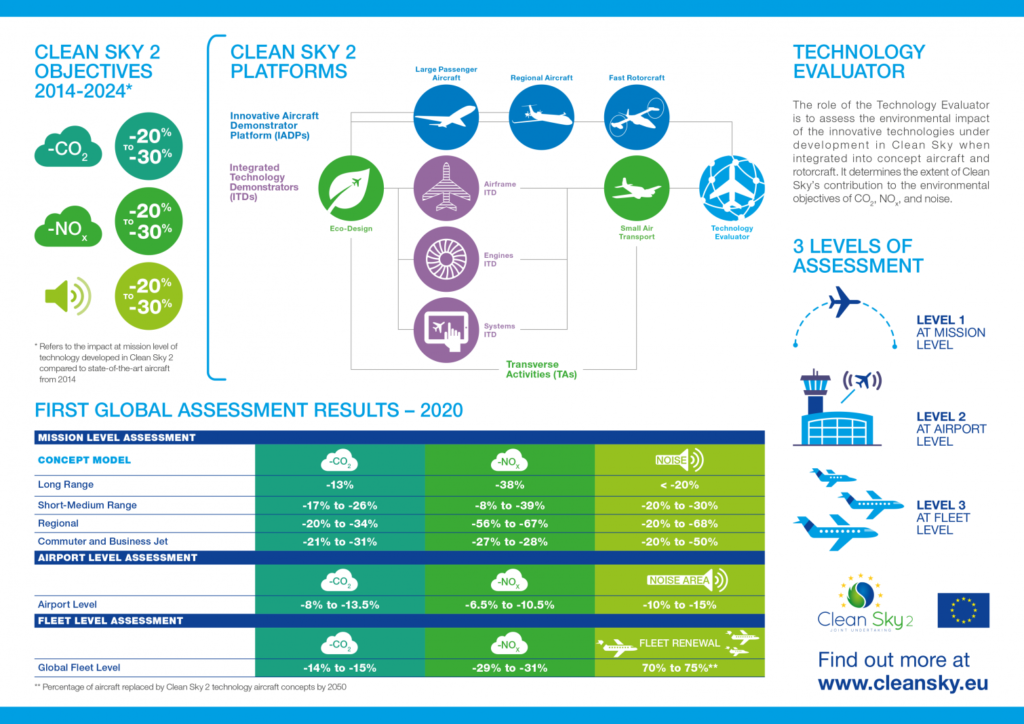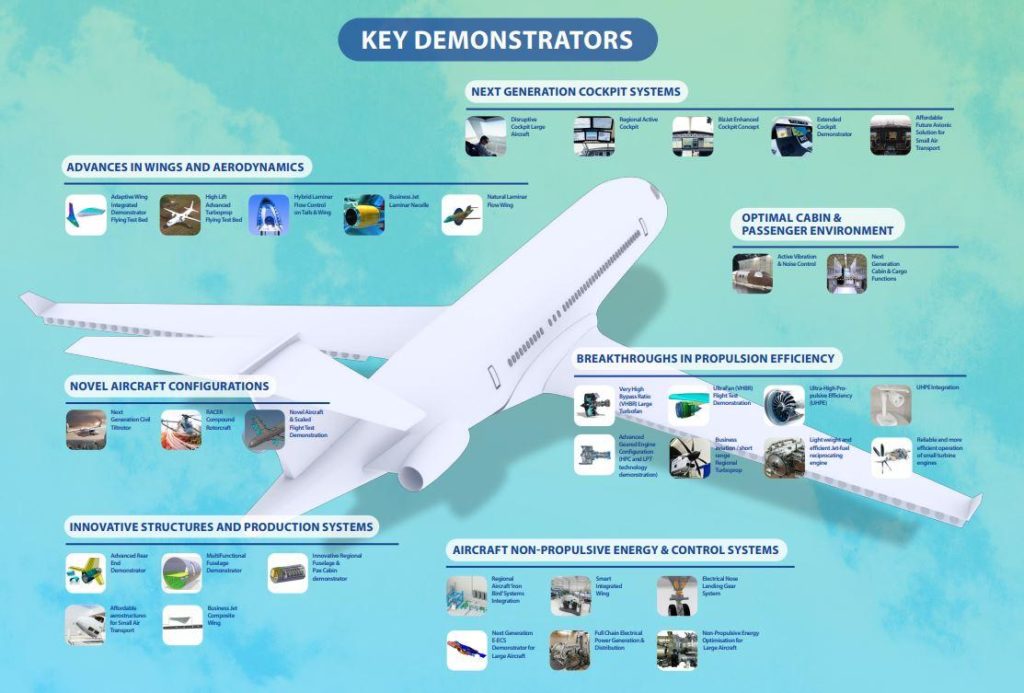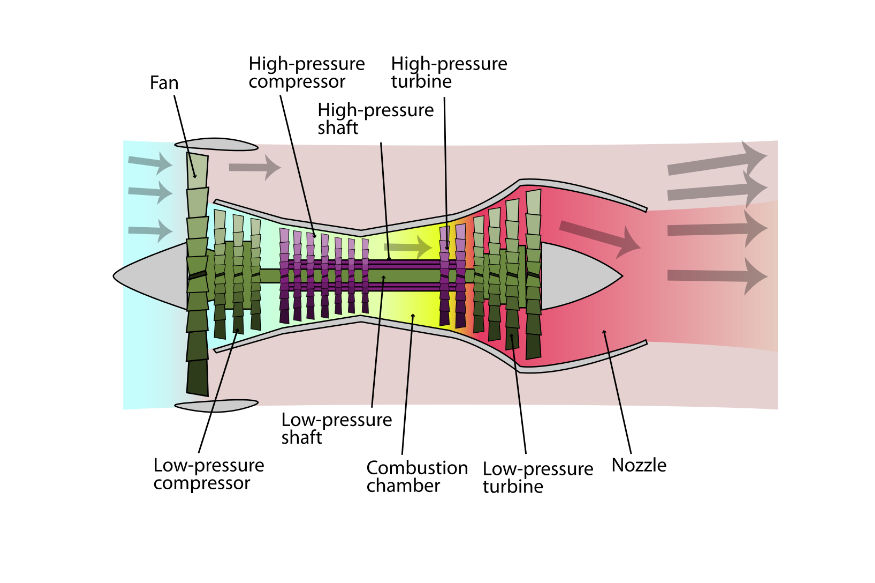Manufacturing firm GKN Aerospace has produced and delivered a turbine exhaust module to German engine company MTU as a part of the E.U.’s Clean Sky-2 EMVAL project. Designed as a small-scale version of an engine still in development, the new component is one-fifth lighter and generally more efficient than existing counterparts, while operating at 150°C, all thanks to 3D printing.
3D Printing in GKN’s Turbine Exhaust Module
Key to the module is the turbine exhaust case (TEC), which handles engine exhaust from the low pressure turbine, cooling it and transferring it. The TEC has to convey these high temperature gasses as efficiently as possible, necessitating high-strength and temperature-resistant materials, as well as an optimally designed structure. To achieve this, GKN turned to metal AM, 3D printing extensive portions of the TEC to reduce weight and optimize its vanes.
“This type of demonstrator project is absolutely vital for GKN Aerospace in order to validate our new technologies at high TRL levels (TRL 5-6) using a full engine test together with international partners,” said Lars Ellbrant, Technology Programme Manager at GKN Aerospace.
The Clean Sky-2 Project
The aim of the Clean Sky-2 program is to develop more sustainable aviation technologies, dispensing over $4 billion to make Europe climate-neutral in 2050. It also serves as a stimulus to aviation manufacturing in Europe, uniting a host of aerospace companies from Airbus, Honeywell, and Lufthansa Technik to Safran and Siemens. The specific goals are seemingly ambitious, to increase aircraft fuel efficiency and reduce CO2 emissions by 20-30% and reduce NOx and noise emissions by 20-30%.
The entire program covers a great deal, but, of course, the end all be all is engine performance. For now, a lot of the attention in 3D printing for aircraft has gone to turbine blades, as well as components like brackets, but there is a lot more out there to optimize.
Generally, if we look at a turbofan engine, as shown above, we can already see that there is a great deal taking place as air flows through the engine. Any optimization in airflow can enhance the engine’s performance. If combustion or air flow can be streamlined, the engine can gain in efficiencies. This can also be achieved by making parts, such as blades, lighter. Any consolidation of components with AM can likewise optimize the flow of energy in some way.
Aerospace 3D Printing at Large
GKN has invested in 3D printing considerably, working with Conflux, Additive Industries, HP and others. GKN is an important aerospace company, being involved in aero structures and propulsion on such projects as the A350XWB, F35 Lightning, and more. GKN has bought Forecast3D and is a big player in AM, generally. However, with around £9 billion in revenue it is a relative minnow in aerospace. Its client in this project, Germany´s MTU Aeroengines, is also a formidable firm with $4 billion in revenue in aero engines, but the commercial aero engine sector is worth some $80 billion, with the maintenance market said to be nearly seven times bigger. Meanwhile, military aviation is an additional $50 billion market.
In the commercial space, the largest vendor is CFM, a joint venture between GE and Safran. Pratt-Whitney is second, followed by GE and then Rolls Royce. In some cases, as with the GEnx program, GE shares an engine project with partners. MTU, for example, has 6.5% of GEnx. Meanwhile, the GE9X program is 75% GE and 25% shared between the IHI Corporation, Snecma and Techspace Aero (Safran), and MTU.
IHI also produces parts for Rolls-Royce´s Trent program. The maintenance for the A380 engine, the GP7000, is to be done by MTU in Germany. Part of this maintenance is then outsourced to Kota Damansara, a Malaysian joint venture between MTU and Lufthansa Technik. The GP7000 itself was developed by Engine Alliance which is a joint venture between General Electric and Pratt & Whitney.
Then, the PW1100G-JM is a Pratt & Whitney engine for the Airbus A320 neo, developed by Pratt with partners MTU and the Japanese Aero Engine Corporation. The Japanese Aero Engine Corporation in turn is a joint venture between Kawasaki Heavy Industries, IHI and Mitsubishi Heavy Industries. The Japanese Aero Engine Corporation also worked on the General Electric GEnx, Rolls-Royce Trent 1000, the General Electric Passport 20, and the General Electric GE9X. It is also part of International Aero Engines which has Pratt and MTU as its partners.
The engine market is an interwoven fabric of collaborators and competitors working together on some of the most technically demanding projects that this world has. GE has individual multi-year maintenance deals that are worth more than the revenue of the entire 3D printing industry. At the beginning of 2022, it got a $6.8 billion deal with Qatar for GE9X engines. CFM has reached deals for over $151 billion list price for its LEAP engines. Amid this complexity and wheeler dealing of the engine market ,MTU´s cooperation with GKN is to be seen as a way for them to strengthen their individual and cooperative prowess.
Any slight advantage in an aero engine over another can have considerable effects. Engine platforms cost many billions to develop and build. Capital is needed from the world over. Parts are manufactured worldwide and risk is shared. Airlines, who often are owned by governments, then pick engines and forge maintenance contracts. Winning those contracts not only has big effects on company profits but also local industrial areas. Many jobs could be created or lost if a contract goes the other way. This in turn has impact on politicians and local regions. All in all, it’s multiple games of Vulcan chess being played simultaneously. Sadly this does mean that quality is not the only consideration going into your next engine. On the upside these companies are all highly competent with aspirations of supreme quality. Quality systems and analysis play a big part of their very beings. As an industry we can just hope that bit by bit we can be introduced as a major success factor in the big engine game.
Subscribe to Our Email Newsletter
Stay up-to-date on all the latest news from the 3D printing industry and receive information and offers from third party vendors.
Print Services
Upload your 3D Models and get them printed quickly and efficiently.
You May Also Like
Nikon SLM Solutions Sells SLM 500 to Primary Weapon Systems to Expand Suppressor Production
Primary Weapons Systems (PWS) is a Boise, Idaho-based manufacturer of suppressors, firearms, and related components. A subsidiary of Vigilant Gear and a sister company to aftermarket Glock slide manufacturer Lone...
3DPOD 261: Tooling and Cooling for AM with Jason Murphy, NXC MFG
Jason Murphy´s NXC MFG (Next Chapter Manufacturing) is not a generalist service; instead, the company specializes in making tooling. Using LPBF and binder jet, the company produces some of the...
HP and Firestorm Labs Form Partnership to Use Multi Jet Fusion 3D Printers in Deployable Factories
HP Inc., maker of a range of additive manufacturing (AM) solutions including the Multi Jet Fusion (MJF) ecosystem, has announced a partnership with Firestorm Labs, a developer of containerized, deployable...
3D Printing News Briefs, July 2, 2025: Copper Alloys, Defense Manufacturing, & More
We’re starting off with metals in today’s 3D Printing News Briefs, as Farsoon has unveiled a large-scale AM solution for copper alloys, and Meltio used its wire-laser metal solution to...



































